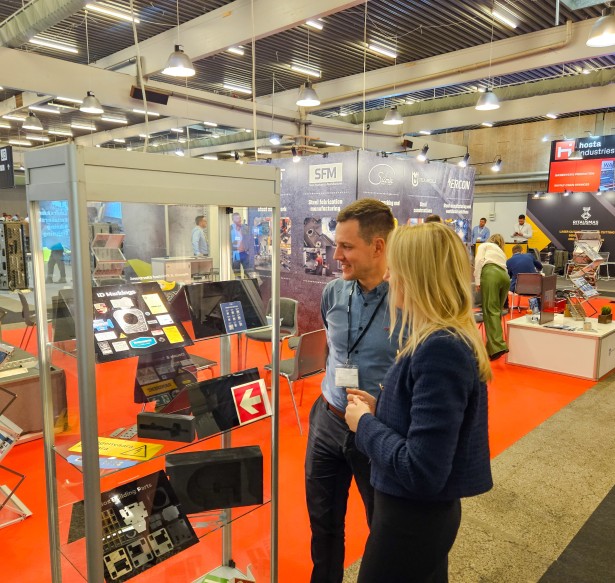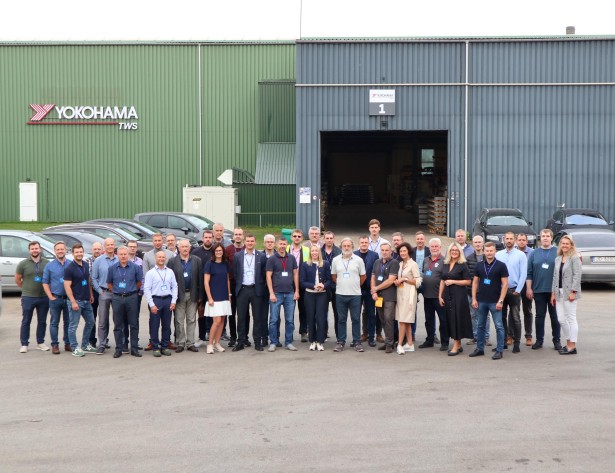How to Choose the Right Type of Equipment Nameplate?
Buying equipment nameplates may seem like a simple task, but there are many things to consider before making the decision. Here are 3 steps you need to consider in order to choose the right nameplates for your equipment.
When choosing a nameplate take into consideration:
- its applicability (material characteristics) in various environments;
- the surface it will be attached to;
- its service life.
Depending on the environment in which the nameplate will be exposed you can choose from four main types of nameplates: anodized aluminium plate, stainless steel nameplate, vinyl decals, polycarbonate overlay.
The table below shows particular characteristics of all four main types of nameplates:
| Type | Outdoor service life | Indoor service life | Abrasion | Extreme temperatures | Humidity | Sunlight UV | Saltwater | Corrosion | Chemicals and solvents | Price comparison |
| Anodized aluminum, Metalphoto | 20+ years | Perfect | No effect | -50C to 530C | No effect | 20+ for black &white | No effect | No effect | No effect | High |
| Stainless steel | Not recommended for long tearm outdoor use | Good | protective coating would increase service life | +800C | No effect | Limited UV resistance | No effect | will corrode | Good resistance | High |
| Vinyl decals | Depends on material. Approx. 1-7 years | Good | protective coating would increase service life | -40C to +80C only for short period of time at extremes | Good | Limited UV resistance | Will fade | No effect | can wash of, if not protected with additional coating | Low |
| Polycarbonate overlays | 10+ years | Very good | Good | -60C to +125C | No effect | Good | No info | No effect | Good | Reasonable |
Useful facts or “good to know”
Anodized Aluminum Nameplates:
Lorem Ipsum is si
- printing is sealed beneath a sapphire-hard anodic layer;
- suitable for use in extreme environmental conditions and can withstand consistent outdoor exposure;
- popular for their light weight and corrosion resistance;
- strong yet may be machined and formed easily because of the low density and soft nature;
- characteristic silvery-white appearance provides superior contrast and readability in nearly any colour;
- included in majority of military standards, because they are the most durable printed aluminum substrate available.
H3 Stainless Steel Nameplates
- offer antibacterial properties that make them a preferred choice for the food industry;
- resistant to extreme temperatures;
- can be engraved.
Vinyl Decals
- high tensile strength, dimensional stability, clarity, and versatility;
- lightweight and easy to print and cut;
- popular for tough equipment applications and ideal solution for indoor equipment.
Polycarbonate Overlays
- high mechanical strength and superior optical clarity makes them a popular choice for indoor equipment and industrial nameplate applications;
- resistant to corrosive chemicals, stains, heat, abrasion; has dimensional stability;
- lightweight and easy to cut;
- available in various material thickness for greater impact resistance;
- high light transmission and low haze makes it one of the best quality films available.
To conclude, when buying equipment nameplates, you should match your needs to the characteristics of the nameplate material. For outdoor applications requiring durability and resistance to extreme conditions, Anodized Aluminum or Stainless Steel Nameplates is your best option. On the other hand, if your equipment will remain indoors in an industrial setting that is not abrasive, go for Vinyl Nameplates (Vinyl Decals). However, in more demanding indoor environment Polycarbonate overlay (Polycarbonate Nameplate) will be the best solution.
Keep in mind that you can add optional finish to increase the durability of many nameplate types.
Ask for more: info@silmor.eu





